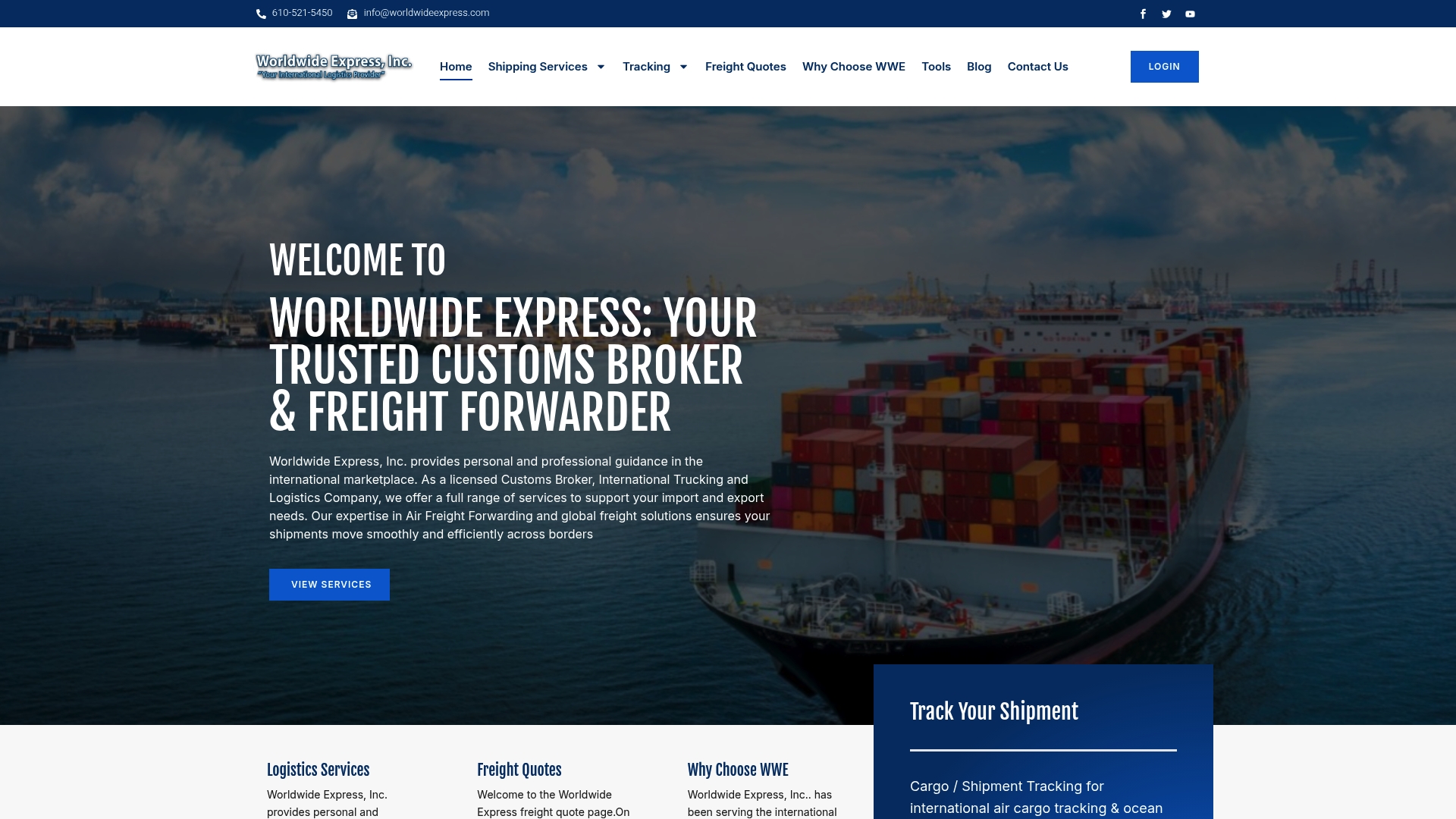Did you know that shipping costs can jump by as much as 35% just because of route specifics or seasonal demand? For anyone managing freight, these hidden factors can quickly add up, affecting your budget and delivery schedules. Knowing what drives these shipping charges empowers you to avoid surprises and plan smarter logistics, so your goods reach their destination efficiently and without extra expense.
Quick Summary
| Takeaway | Explanation |
|---|---|
| 1. Understand freight charges based on weight and dimensions | Shipping costs depend on either actual or dimensional weight, influencing your total expenses significantly. |
| 2. Master freight classification for better pricing | Knowing your commodity’s freight class helps predict shipping costs and ensures proper handling of your cargo. |
| 3. Adjust shipping strategies based on distance and routes | Transportation costs are affected by distance, route complexities, and regional economic conditions, so strategic planning is crucial. |
| 4. Choose the right transport mode for your needs | Each shipping method (air, ocean, land) has distinct benefits; select based on cost, speed, and product type. |
| 5. Be aware of accessorial charges and services | Extra fees for specialized services can inflate shipping costs; manage these by communicating needs upfront and negotiating rates. |
Table of Contents
- Shipment Weight And Dimensions Impact Costs
- Freight Class And Cargo Type Explained
- Distance And Route Influence On Pricing
- Mode Of Transport: Air, Ocean, Or Land
- Accessorial Charges And Extra Services
- Customs, Duties, And Regulatory Compliance
- Seasonal Demand And Market Fluctuations
- Insurance And Risk Management Considerations
1. Shipment Weight and Dimensions Impact Costs
When shipping freight, understanding how weight and dimensions influence your shipping expenses is crucial. Freight carriers calculate shipping charges using a complex measurement approach that can significantly impact your total transportation costs.
Most shipping companies employ a pricing method that charges based on whichever is greater: the actual physical weight or the dimensional weight of your shipment. According to shipping industry data, this calculation ensures carriers are compensated fairly for both heavy and bulky packages.
Dimensional weight transforms package volume into a billable weight by multiplying length, width, and height. This means a large but lightweight package could cost more to ship than a small, dense item. For instance, a big box of lightweight foam might trigger higher charges than a compact box of metal parts with the same actual weight.
In different shipping modes, weight considerations vary. Ocean LCL shipping typically prices shipments based on volume, while air freight becomes less economical above certain weight thresholds like 500 kg. Smart shippers understand these nuances to optimize their shipping strategies.
To minimize shipping costs, consider these practical strategies:
- Optimize packaging to reduce unnecessary space
- Choose compact, efficient containers
- Consolidate shipments when possible
- Select appropriate shipping modes based on weight and volume
Learn more about reducing shipping costs in our comprehensive guide on shipping strategies.
By understanding how weight and dimensions impact freight quotes, you can make more informed shipping decisions and potentially save significant money on transportation expenses.
2. Freight Class and Cargo Type Explained
Freight classification is a critical yet often misunderstood aspect of shipping that directly impacts your transportation costs and logistics planning. Understanding freight class helps you predict shipping expenses and ensure proper handling of your cargo.
The National Motor Freight Classification system categorizes commodities into classes ranging from 50 to 500, which might sound complex but essentially determines how transportable and valuable your shipment is. This classification considers four key factors: density, stowability, handling, and liability.
Imagine freight class as a universal language that allows carriers and shippers to communicate about cargo characteristics. A lower freight class typically indicates denser, more compact items that are easier to transport. Conversely, higher classes represent fragile, bulky, or challenging items that require more careful handling.
For example, a shipment of steel pipes might be in a lower freight class due to high density and easy handling, while delicate electronics or irregularly shaped machinery would fall into higher classes with increased shipping costs.
To navigate freight classifications effectively, consider these practical strategies:
- Research your specific commodity’s standard freight class
- Accurately measure and weigh your shipment
- Package items to minimize potential handling complications
- Understand how different cargo types impact classification
Learn more about key freight terms in our comprehensive definitions guide.
By mastering freight class nuances, you can make more informed shipping decisions, potentially reducing your transportation expenses and ensuring smoother logistics operations.
3. Distance and Route Influence on Pricing
When it comes to freight shipping, distance is far more than just miles traveled. Transportation routes and geographic complexities play a significant role in determining your shipping expenses, creating a dynamic pricing landscape that can catch many shippers by surprise.
Transportation costs are not simply a matter of linear distance. Multiple factors like route complexity, cross border regulations, seasonal demand, and regional economic conditions dramatically impact pricing. Recent data highlights how interconnected these elements can be. For instance, cross border trucking rates between the U.S., Canada, and Mexico can fluctuate dramatically. Dry van shipments have seen rate increases as high as 18% while refrigerated carriers experienced up to 35% price jumps based on policy changes and route specifics.
Domestic truckload rates demonstrate similar complexity. Pricing per mile can vary substantially depending on seasonal demand and specific transportation corridors. Current market trends suggest average truckload rates around $1.68 per mile (excluding fuel costs) after peak holiday shipping periods, illustrating how nuanced route pricing can become.
To navigate these pricing complexities effectively, consider these strategic approaches:
- Plan shipments during off peak seasons
- Investigate multiple routing options
- Understand regional economic trends
- Negotiate rates for recurring shipping lanes
Explore our comprehensive guide on understanding shipping routes and costs.
By recognizing how distance and routes influence freight pricing, you can develop more sophisticated shipping strategies that optimize both cost and efficiency.
4. Mode of Transport: Air, Ocean, or Land
Selecting the right transportation mode can make or break your shipping strategy, dramatically impacting cost, speed, and overall logistics efficiency. Transportation modes are not one size fits all but strategic choices that depend on your specific shipping requirements.
Each transportation mode offers unique advantages and challenges. Ocean freight provides cost effective solutions for large volume shipments. Typical ocean shipping costs range from $2 to $4 per kilogram for substantial shipments, with transit times spanning 30 to 40 days. This makes it ideal for bulk cargo that is not time sensitive.
Air freight represents the speed champion of shipping modes. While more expensive at approximately $5 to $8 per kilogram for mid weight shipments, it offers lightning fast transit times. Global air cargo markets demonstrate significant volatility. Recent data shows air cargo spot rates can fluctuate dramatically, with rates dropping 4% year over year in some regions while specific routes like Northeast Asia to North America experienced rate increases.
Land transportation through trucking provides flexibility for domestic and regional shipments, bridging gaps between other transportation modes. It allows for more precise delivery scheduling and direct point to point transportation.
To choose the most effective transportation mode, consider these strategic factors:
- Evaluate shipment urgency
- Assess total cargo volume
- Compare total landed cost
- Consider product fragility
- Review destination infrastructure
Learn more about ocean transportation strategies in our comprehensive guide.
Understanding the nuanced differences between air, ocean, and land transportation will help you make more informed shipping decisions that balance cost, speed, and reliability.
5. Accessorial Charges and Extra Services
Accessorial charges are the hidden complexity in shipping that can quickly transform an apparently straightforward quote into a much more expensive proposition. These additional fees cover specialized services beyond standard transportation that require extra labor, equipment, or unique handling.
Think of accessorial charges like optional features on a car. Just as you might pay extra for leather seats or advanced navigation, shippers pay for services that go beyond basic dock to dock transportation. These charges can include anything from liftgate usage and residential deliveries to time specific drop offs and handling oversized or unusual freight.
Common accessorial services in less than truckload (LTL) shipping range from practical necessities to specialized requirements. Liftgate services help unload freight at locations without loading docks. Residential or non commercial deliveries address shipments to locations that require additional maneuvering. Time specific deliveries ensure precise scheduling which demands more logistical coordination.
To manage these potential extra costs effectively, shippers should:
- Clearly communicate delivery requirements upfront
- Request detailed fee breakdowns before shipping
- Understand your specific delivery location constraints
- Negotiate rates for recurring accessorial needs
- Plan shipments to minimize specialized service requirements
Explore our comprehensive guide to understanding freight terms and definitions.
By anticipating and strategically managing accessorial charges, you can prevent unexpected expenses and create more predictable shipping budgets. Knowledge truly becomes your most valuable shipping asset.
6. Customs, Duties, and Regulatory Compliance
Customs and regulatory compliance represents one of the most complex yet critical aspects of international shipping. Navigating the intricate landscape of import regulations can mean the difference between smooth shipping and costly legal complications.
The U.S. Customs Modernization Act introduced a revolutionary approach called “informed compliance,” which fundamentally shifted responsibility onto importers and brokers. This means you are not just expected to follow rules but to actively understand and anticipate them. Under these guidelines, businesses must maintain meticulously audit ready records and demonstrate comprehensive knowledge of customs laws.
Entry visibility has become a crucial concept in modern international trade. This process ensures that shipments meet all documentation and compliance requirements before they cross borders. It involves thorough documentation, accurate classification of goods, proper valuation, and adherence to specific import regulations that vary by country and product type.
To successfully manage customs and regulatory challenges, consider these strategic approaches:
- Invest in comprehensive compliance training
- Maintain detailed and accurate shipping documentation
- Stay updated on changing international trade regulations
- Work with experienced customs brokers
- Implement robust record keeping systems
Explore our detailed guide on understanding customs invoice requirements.
By treating customs compliance as a proactive strategy rather than a reactive process, you can minimize risks, avoid potential penalties, and ensure your international shipments move smoothly across borders.
7. Seasonal Demand and Market Fluctuations
Freight markets are dynamic ecosystems that pulse with seasonal rhythms, dramatically impacting shipping costs and availability. Understanding these cyclical patterns can transform your shipping strategy from reactive to proactively strategic.
Seasonal trends create predictable yet complex shifts in transportation demand. The spring produce season from March to July, for example, triggers substantial changes in refrigerated shipping capacity. Reefer rates can surge up to 30% in May as agricultural shipments ramp up. Similarly, construction activity drives significant fluctuations in flatbed transportation, with rates potentially increasing 20 to 40% between February and April.
Regional events and industry specific cycles add another layer of complexity to freight market dynamics. Localized demand spikes can emerge from unexpected sources like potato harvests, wood pellet fuel requirements, industry appreciation weeks, or major retail events such as Amazon Prime Day. These events create temporary but intense shifts in transportation capacity and pricing.
To navigate seasonal market fluctuations effectively, consider these strategic approaches:
- Track historical shipping data for your industry
- Plan shipments during lower demand periods
- Build flexible logistics partnerships
- Develop advanced booking strategies
- Create buffer capacity in your supply chain
Discover more about managing shipping costs in our comprehensive guide.
By treating seasonal market fluctuations as predictable opportunities rather than unexpected challenges, you can optimize your shipping expenses and maintain competitive logistics performance.
8. Insurance and Risk Management Considerations
Freight insurance is not just a optional add on but a critical shield protecting your business from potentially catastrophic financial losses. Understanding and strategically managing shipping risks can mean the difference between a minor setback and a major business disruption.
In international shipping, risks are omnipresent. Cargo can be damaged during loading, transit, or unloading. Storms, mishandling, equipment failures, or unexpected accidents can compromise entire shipments. Freight insurance appears as a distinct line item in shipping quotes, reflecting its importance as a fundamental risk management strategy.
Different shipping modes and cargo types require unique insurance considerations. Ocean freight presents different risk profiles compared to air or land transportation. Factors like cargo fragility, transportation duration, handling complexity, and geographic route all influence potential insurance requirements. Some shipments might need comprehensive coverage, while others require more targeted protection.
To effectively manage shipping risks, consider these strategic approaches:
- Thoroughly assess your specific cargo vulnerabilities
- Understand different insurance coverage levels
- Document shipment conditions before and after transit
- Select insurance matching your specific transportation mode
- Review and update insurance policies regularly
Explore our comprehensive guide to understanding customs and shipping risks.
By treating insurance as a proactive investment rather than an afterthought, you can transform potential shipping vulnerabilities into manageable business risks.
Below is a comprehensive table summarizing the key concepts and strategies discussed throughout the article.
| Topic | Description | Key Considerations |
|---|---|---|
| Shipment Weight & Dimensions | Charges are based on actual or dimensional weight, affecting costs for bulky but light items. | Optimize packaging and choose efficient containers to minimize costs. |
| Freight Class & Cargo Type | Freight classification (classes 50-500) affects costs based on density, stowability, handling, and liability. | Research commodity-specific classes, measure accurately, and package effectively. |
| Distance & Route Pricing | Costs depend on route complexity, regulations, and demand, not just distance. | Plan for off-peak seasons, explore routing options, and understand economic trends. |
| Mode of Transport | Various modes (air, ocean, land) offer different cost, speed, and efficiency trade-offs. | Consider shipment urgency, volume, fragility, and infrastructure when choosing a mode. |
| Accessorial Charges | Additional fees for specialized services such as liftgate usage or specific deliveries. | Communicate requirements upfront, request fee breakdowns, and plan to avoid extra costs. |
| Customs & Compliance | Compliance with import regulations is essential, with informed compliance shifting responsibility to importers. | Invest in compliance training, maintain documentation, and stay updated on regulations. |
| Seasonal Demand | Freight markets fluctuate seasonally, affecting costs and availability, such as during produce season or regional events. | Track historical data, plan for low-demand periods, and build flexible logistics partnerships. |
| Insurance & Risk Management | Freight insurance protects against financial losses due to risks in transit, with considerations varying by transport mode and cargo type. | Assess cargo vulnerabilities, understand insurance coverage options, and regularly review policies. |
Transform Freight Quote Challenges into Opportunity with Worldwide Express
Feeling overwhelmed by hidden costs, complicated freight classes, or unpredictable shipping rates? As highlighted in our article, understanding key factors like shipment dimensions, freight classification, route complexity, and compliance requirements is essential for controlling your shipping budget and avoiding costly surprises. Many shippers lose valuable time and money because they lack the right partner to help them navigate these challenges and turn freight knowledge into real savings.
Discover our solutions for smarter shipping

Take the next step to simplify your freight experience. At Worldwide Express, Inc., we offer tailored logistics, customs expertise, accurate quoting, and transparent accessorial management—all designed to empower your business. Visit our main site today and request a personalized consultation. Stop letting freight factors slow you down and start shipping with confidence right now.
Frequently Asked Questions
What factors influence freight quotes besides weight and dimensions?
Understanding freight class, distance and route complexity, and accessorial charges also significantly influence freight quotes. To get a better estimate, analyze each of these factors prior to obtaining a quote to prepare for additional costs or savings.
How can I minimize accessorial charges when shipping?
You can minimize accessorial charges by clearly communicating your delivery requirements upfront and requesting a detailed fee breakdown before shipping. For instance, planning shipments to avoid residential deliveries can reduce additional fees.
What should I know about customs and regulatory compliance for international shipping?
Customs and regulatory compliance requires careful attention to documentation and an understanding of varying regulations. Maintain accurate records and stay updated on trade regulations to avoid potential penalties and ensure smooth shipment processes.
How do seasonal market fluctuations impact my shipping costs?
Seasonal market fluctuations create predictable demand shifts that can significantly affect shipping costs. Analyze historical shipping data to plan your shipments during lower demand periods, potentially allowing for cost reductions of 10-30%.
When should I consider freight insurance?
Freight insurance should be considered for any shipment, especially those involving high-value or fragile items. Evaluate your cargo’s vulnerability and select appropriate insurance to safeguard against potential losses during transportation.
What is the best way to choose a mode of transport for my shipment?
Choosing the right mode of transport depends on factors like shipment urgency, cargo volume, and overall costs. Evaluate these criteria to identify the most efficient transport that meets your needs and can potentially lower your shipping expenses by 10-20%.
Recommended
- Understanding Freight Rate Negotiation: Key Concepts Explained – Worldwide Express, Inc.
- What is a Freight Quote? Understanding Its Importance – Worldwide Express, Inc.
- 8 Key Freight Terms Definitions Every Importer Should Know – Worldwide Express, Inc.
- Understanding Container Shipping Rates for Global Trade – Worldwide Express, Inc.






